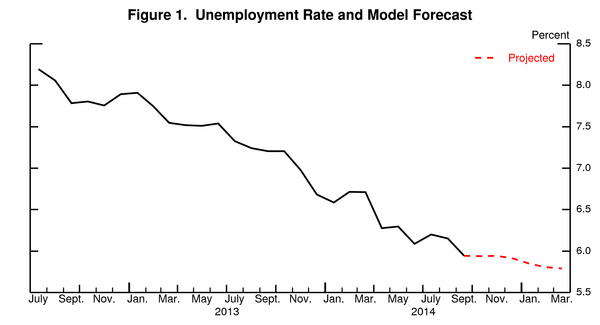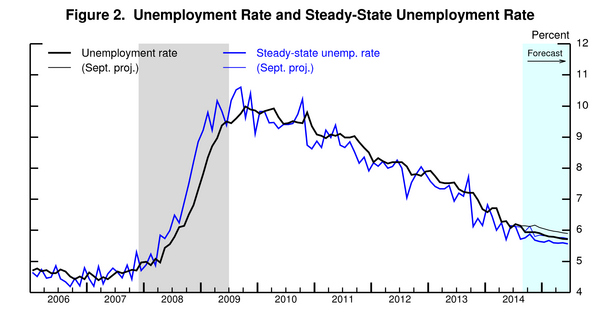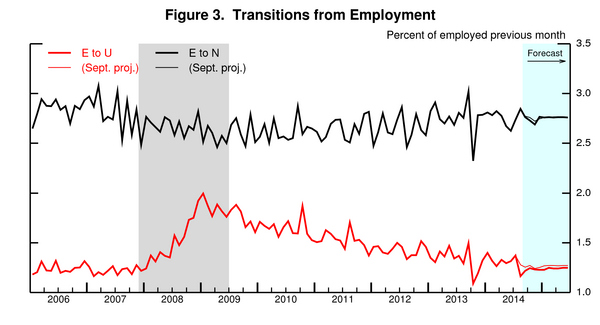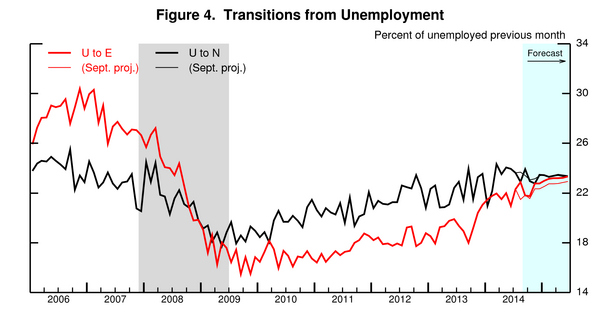This post discusses my monthly update of the Barnichon-Nekarda model. For an introduction to the basic concepts used in this post, read my introductory post (Full details are available here.)
In September, the unemployment rate declined to 5.9%, 0.2% lower than I expected. The difference owes to a stronger than expected decline in workers’ job separation rate (layoffs). Since the separation rate is now back at its pre-recession level, there is little further gain to expect from this front, and I continue to expect the unemployment rate to remain steady over the next 6 months with a jobless rate of 5.9% in October and 5.8% in March 2015.

This model’s forecast can be easily understood by looking at the projected behavior of the “steady-state” unemployment rate. The steady-state unemployment rate, the rate of unemployment implied by the underlying labor force flows—the blue line in figure 2— stands currently at 5.8%, just 0.1% lower than the actual unemployment rate. Our research shows that the actual unemployment rate converges toward this steady state. With a steady-state unemployment rate only marginally below the actual rate, there is little “steady-state convergence dynamic” pushing the unemployment rate down going forward. Moreover, the steady-state unemployment rate (SSUR) is expected to decline only slowly over the coming month with a steady-state rate at 5.6% by March 2015 (figure 2). All in all, there is little downward momentum developing on the unemployment rate front.

To forecast the behavior of steady-state unemployment, the model propagates forward its best estimate for how the flows in and out of unemployment will evolve over time. Since the separation rate is now back at its pre-recession level (figure 3), there is little further gain to expect from this front, and the forecasts of the flows have been little affected. Thus, apart from a lower level, the model continues to anticipate the unemployment rate to remain steady over the next six months.



To read more about the underlying model and the evidence that it outperforms other unemployment rate forecasts, see Barnichon and Nekarda (2012).
The Brookings Institution is committed to quality, independence, and impact.
We are supported by a diverse array of funders. In line with our values and policies, each Brookings publication represents the sole views of its author(s).




Commentary
Unemployment Not Likely to Improve for the Next 6 months; Will Hover Just Below 6 percent
November 6, 2014